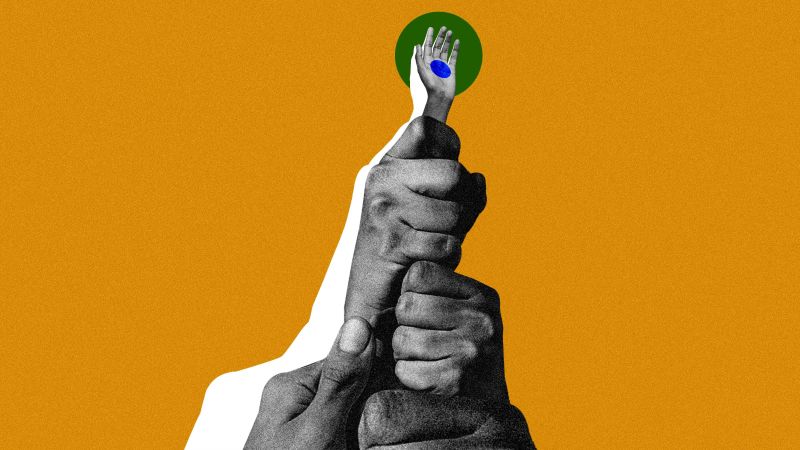
Indian teenager alleges rape over five years by nearly 60 schoolmates, neighbors, relatives and strangers
Editor’s Note: This article contains details that readers may find distressing.
Five years ago, a 13-year-old girl, the daughter of poor wage laborers from one of India’s most marginalized communities, was allegedly sexually abused by one of her neighbors in the village where she lived.
Her alleged abuser filmed it and police are investigating whether he used the images to blackmail and manipulate the girl into being raped and sexually abused by dozens of other men and boys over the next five years.
Police say the allegations only came to light after the girl, now 18, spoke to a counselor visiting her college in Kerala state and detailed the years of horrific abuse.
Charges have not yet been filed and the 58 men remain in detention. None of the accused has spoken publicly about the allegations. Under Indian rape laws, the girl has not been identified.
Violence against women is rampant in India due to entrenched sexism and patriarchy, despite laws being amended to include more severe punishments for abusers.
In August the rape and murder of a trainee medic in the eastern city of Kolkata sparked a nationwide doctors’ strike that brought tens of thousands into the streets to demand change.
The Kerala case has not sparked similar outrage.
Experts and activists say that’s because the victim is from the Dalit community at the bottom of the Hindu caste system, a 3,000-year-old social and religious hierarchy that categorizes people at birth and defines their place in society.
Dalits traditionally carry out occupations viewed as ritually “unclean” by Hindu scripture, such as manual scavenging, waste picking and street sweeping.
They are often banned from visiting temples and forced to live apart from higher-caste communities, often in squalor and farther from access to services.
Despite legislation banning discrimination based on caste, activists say the stigma leaves India’s more than 260 million Dalits vulnerable to abuse and less able to seek redress for crimes committed against them.
“When it’s Dalit women, in general the outrage is less across the country,” said Cynthia Stephen, a Dalit rights activist and social policy researcher.
There is a sense that “this girl is not ‘one of us,’” she said.
Manipulated, kidnapped and abused
At least three of her abusers promised to marry her, according to police. One threatened to kill her if she reported the abuse.
Some of the men acted alone, police said. But others are accused of gang rape. “It’s not that all the cases are connected. But in one case, there might be four or five accused,” said Begum, from Kerala Police.
Many of the men contacted the young girl on her father’s phone, through social media apps such as Instagram and WhatsApp, late at night after he went to sleep, police said.
The alleged abuse took place in private and public spaces, in homes and in cars, at bus stops and in fields. Some of the cases allegedly involved men who were strangers, living in towns dozens of miles away.
Some of the cases involve allegations of human trafficking, because the men forced the girl to travel outside her village, police said.
The allegations have sent shock waves through the girl’s village in the green hills of Kerala, where many work as wage laborers in low-paid jobs like construction and farming.
Police say the girl’s parents worked long hours and did not know about the alleged abuse of their daughter.
When the allegations emerged in January, some women in the community were sympathetic toward the accused and angry at the survivor, according to local media outlet The News Minute.
The women criticized the girl’s clothing and lifestyle and blamed her mother for not watching over her more closely, The News Minute reported.
One mother, whose son was among the accused, said he was innocent. She said he had known the girl since she was a baby and “had raised the girl in his arms,” according to the outlet.
‘Monsters in her own backyard’
More than half of Dalits in Kerala live in designated areas called “colonies,” known for cramped and harsh living conditions, after years of being denied land ownership under historical laws.
Madhumita Pandey, a professor in criminology and gender justice at Sheffield Hallam University in the United Kingdom, said the tight-knit nature of communities such as these colonies could explain why the alleged abuse of the teenage girl was not reported until recently.
“They could sometimes be your friend, uncle or neighbor,” she said.
It can be harder to report abuse when “the so-called monsters are in our own backyard,” she said.
Official statistics support her point: the alleged perpetrator is known to the victim in more than 98% of reported rape cases in Kerala, according to government data.
There were 4,241 reported cases of rape against women from oppressed castes in India, including Dalit women, in 2022, the most recent year for which data exists, according to India’s National Crime Records Bureau. That’s equivalent to more than 10 rapes per day.
There were more than 31,500 rapes reported overall in 2022, according to the NCRB.
However, given the difficulties in reporting such crimes, especially for the Dalit community, the true figure is likely higher.
Furthermore, in close communities, and especially in Dalit communities, women and girls also risk isolating themselves or being seen as bringing dishonor upon their families if they report abuse, Pandey said.
In at least 16 of the cases from the alleged Kerala village abuse, the accused men are from more privileged castes, according to police. If found guilty, these men could face harsher punishments under Indian laws designed to protect disadvantaged castes.
A 2020 report by the NGO Equality Now found that sexual violence is used by dominant castes to oppress Dalit women and girls, who are often denied justice because of a “prevalent culture of impunity, particularly when the perpetrators are from a dominant caste.”
Even when Dalit women report sexual abuse, they face an uphill battle to justice.
The Equality Now report followed 40 cases of rape against Dalit women and girls, and the seven cases that resulted in convictions involved either rape and murder together or were committed against girls under the age of 6.
N Rajeev, the head of the Child Welfare Committee in Pathanamthitta, the Kerala district where the girl is from, said an increase in reported child sexual abuse cases was in part thanks to campaigns in schools that help children identify and disclose abuse. The number of reported child sexual abuse cases in the state has surged to 4,663 in 2023, more than four times the 1,002 reported in 2013, according to government data.
The Dalit girl is now living in a shelter where she is receiving counseling and support, Begum, the police officer, said. The girl’s mother is also being given counseling and has the option to stay in a women’s shelter if she feels unsafe in the neighborhood. Begum said police have dedicated “maximum manpower” to the case.
The case will likely take years to go through the courts.
Across India, rape has one of the lowest conviction rates of major crimes, with 27% of cases resulting in convictions in 2022, according to the NCRB.
While child sexual abuse continues to be a “a grim reality” in Kerala, the fact that the Dalit girl was able to report the case is a step in the right direction, Stephen said.
“Otherwise, this would have just gone on unreported for years on end, then she would have nobody to help her.”
